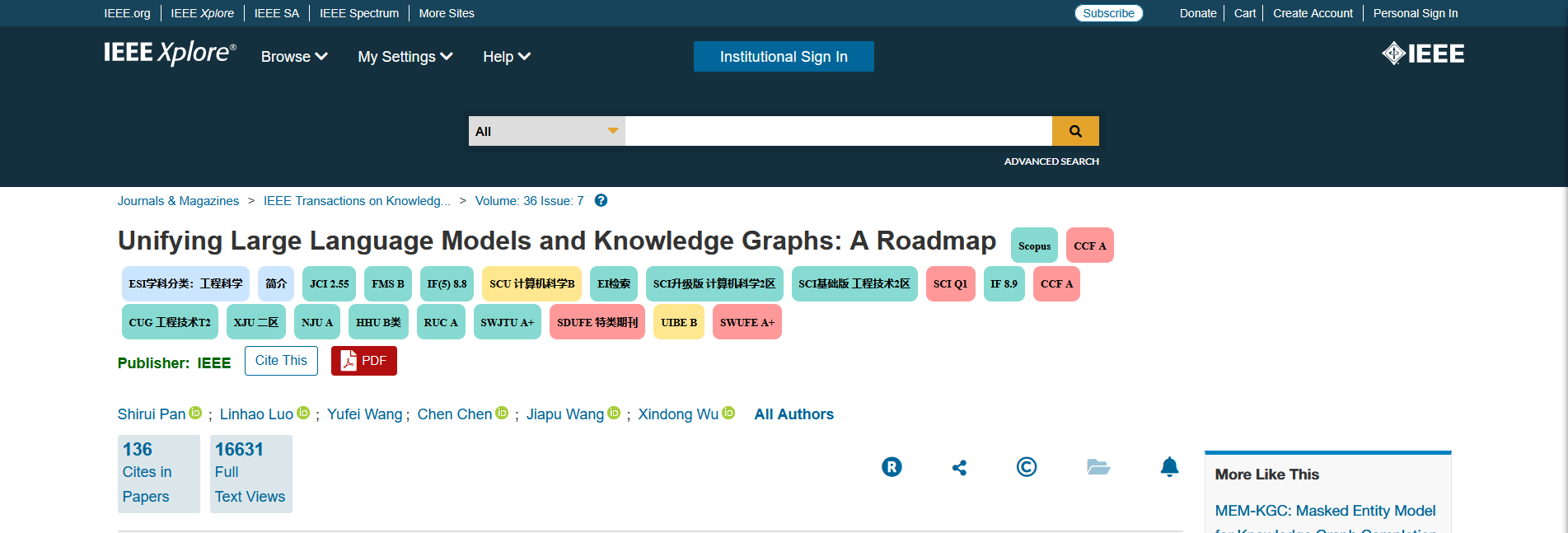论文地址:https://ieeexplore.ieee.org/document/10387715/

0.1 阅读前言
以下对 大语言模型 称之为 LLM ,对 知识图谱 称之为 KG
0.2 阅读摘要
本文综述了当前LLM+KG的三个主流研究方向
- KG加成的LLM(KG-enhanced LLMs)
- LLM加成的KG(LLM-augmented KGs)
- LLM与KG协同(Synergized LLMs + KGs)
对两者各自的背景知识、优缺点进行阐述,得出“互补”的观点,并对目前三个主流研究方向的细分方向进行解释、方法举例。
原文Abstract
Large language models (LLMs), such as ChatGPT and GPT4, are making new waves in the field of natural language processing and artificial intelligence, due to their emergent ability and generalizability. However, LLMs are black-box models, which often fall short of capturing and accessing factual knowledge. In contrast, Knowledge Graphs (KGs), Wikipedia, and Huapu for example, are structured knowledge models that explicitly store rich factual knowledge. KGs can enhance LLMs by providing external knowledge for inference and interpretability. Meanwhile, KGs are difficult to construct and evolve by nature, which challenges the existing methods in KGs to generate new facts and represent unseen knowledge. Therefore, it is complementary to unify LLMs and KGs together and, simultaneously, leverage their advantages. In this article, we present a forward-looking roadmap for the unification of LLMs and KGs. Our roadmap consists of three general frameworks, namely: 1) KG-enhanced LLMs, which incorporate KGs during the pre-training and inference phases of LLMs, or for the purpose of enhancing understanding of the knowledge learned by LLMs; 2) LLM-augmented KGs, that leverage LLMs for different KG tasks such as embedding, completion, construction, graph-to-text generation, and question answering; and 3) Synergized LLMs + KGs, in which LLMs and KGs play equal roles and work in a mutually beneficial way to enhance both LLMs and KGs for bidirectional reasoning driven by both data and knowledge. We review and summarize existing efforts within these three frameworks in our roadmap and pinpoint their future research directions.